This reading list provides a range of professional readings recommended for all ranks in the unit, focused on specialist intelligence skills and the wider profession of arms. The list is intended to provide useful works that are foundational for intelligence professionals across a range of topics.
INTELLIGENCE – GENERAL

On Intelligence: The History of Espionage and the Secret World
John Hughes-Wilson (2016)
An excellent, easy to read historical analysis of intelligence, especially HUMINT and espionage use by governments and military commanders. This book is highly recommended for all intelligence professionals at all ranks. An essential read for all junior intelligence analysts and collectors.
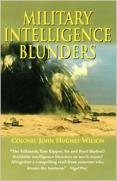
Military Intelligence Blunders
John Hughes-Wilson (1999)
Another must-read for all intelligence professionals, this book provides critical insight on ‘intelligence failures’ and highlights the key role of commanders, bias in decision making, deception, analysis and collection limitations. An essential read for all intelligence officers and analysts.
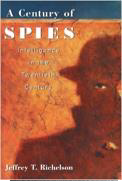
A Century of Spies
Jeffery T. Richelston (1997)
A good account of espionage and intelligence work in the 20th Century. A useful general reader on intelligence work for the layman.
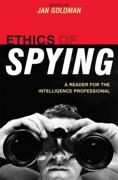
Ethics of Spying
Jan Goldman (2009)
An insightful discussion on the ethics behind intelligence tradecraft, surveillance and espionage.
ADVERSARIES AND SMALL WARS
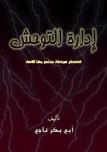
The Management of Savagery: The Most Critical Stage Through Which the Umma Will Pass
(Abu Bakr Naji). 23 May 2006, Translated by William McCants
A raw source text for understanding ISIS methods, intentions and religious basis for what they do. This online book, provides the background philosophy, concepts and broad religious justification for ISIS’s methods in creating the Caliphate – as observed in their operations from 2013 onwards. A must read for any analyst wanting to understand this enduring threat.
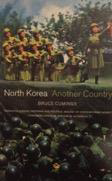
North Korea – Another Country
Bruce Cumings (2004)
Provides an inside look at the mindset of the North Korean regime and understanding of how the society has formed and continues to function. Some good insight into how a regime uses propaganda to maintain order and control over populations. This book is recommended for analysts and PSYOPS operators alike.
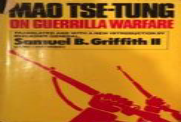
On Guerrilla Warfare
Mao Tse-Tung (Translated by Samuel Griffiths) (1930)
Mao’s guerrilla warfare concepts, strategies and ideas of ‘People’s War’ are a foundational set of themes that form the basis for nearly every revolutionary, terrorist and freedom fighter in the twentieth century and today. On Guerilla Warfare provides insight for all analysts keen to understand unconventional threats and organisations.
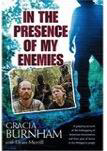
In the Presence of My Enemies
Gracia Burnham (2000)
Provides a hostage’s account of how Abu Sayyaf Group (ASG) operate in the Philippines, covering the story of the kidnapping of U.S. missionaries from Tawi Tawi during 2000. This account gives a useful insight into South East Asian terrorist group operations and kidnap for ransom tactics.
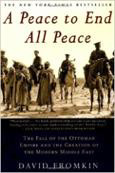
A Peace to End All Peace
David Fromkin (2009)
The Book to understand the history and reasons behind the middle east area of conflict. This book provides the story and background regarding how the modern middle east was created from the ashes of world war I, inclusive of the Sykes-Picot agreement. A must read for all source analysts.
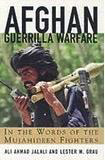
Afghan Guerilla Warfare: In the Words of the Mujahideen Fighters
Ali Muhamad Jaliali and Lester W. Grau (2002)
Based on interviews with Mujahideen leaders and fighters, this book gives insight to insurgent TTPs from the Afghan Wars against Soviet Russia during the 1980’s. A useful book for insurgent TTP awareness for analysts and S2s.

Australian Jihad
Martin Chulov (2006)
A useful read on Australian extremists during the 1990s to the recent past. This book gives some detailed accounts of terrorists activities in Australia, the Jemaah Islamiyah network and Al-Qaeda influence in South East Asia. This book is hard to find now – was withdrawn from publication due to its links to Australians on trial for terrorism charges.
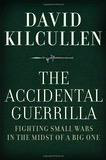
The Accidental Guerrilla: Fighting Small Wars in the Midst of a Big One
David Kilcullen (2009)
Insight into small wars, insurgencies and terrorist groups in a modern setting. Written by a former Australian Army Officer and advisor to senior levels in the U.S. military and government.
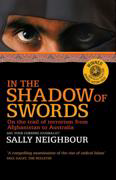
In The Shadow of Swords: How Islamic Terrorists Declared War on Australia
Sally Neighbour (2005)
Written by ABC journalist, this book covers the key developments in radical Islam in South East Asia, relating to regional terrorist groups and provides a commentary on Australian foreign policy and engagement during the late 1990’s and onward. A useful book for terrorism analysts and professionals wanting a different view on extremism and how it relates to Australia.

Operational Culture for the Warfighter – Principles and Applications
Barak A. Salmoni & Paula Holmes Eber (2010)
A publication from the USMC University Press, this book provides a system and framework for the analysis of culture in operational settings. The book also provides examples and case studies from the U.S. Military experience regarding assessments on culture. This book is applicable for all source analysts and influencers working to understand foreign cultures and the conduct of human terrain analysis.
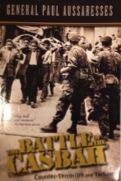
The Battle of the Casbah – Counter-Terrorism & Torture
General Paul Aussaresses (2000)
Classic account of French counterinsurgency (COIN) operations in Algeria during the 1950’s, written by a lead interrogator and military officer. This book highlights the problems with intelligence operations in urban COIN environments, notably the use of militaries in police actions where interrogation had no limits.

Small Wars: Their Theory and Practice
Colonel C.E. Callwell (1996)
An insightful read for analysts and operators keen for historical understanding of current counterinsurgency (COIN) practice. This book analyses primarily British ‘small wars’ as they were undertaken in Africa, India, and parts of Asia.
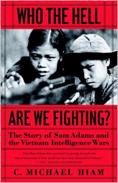
Who The Hell Are We Fighting: The Story of Sam Adams and The Vietnam Intelligence Wars
C. Michael Hiam (2006)
A most important book for intelligence professionals to understand the difficulties in fighting insurgencies. This book also highlights the often difficult relationship between intelligence staff and commanders (with differing views on the conflict), bringing to light the Vietnam War problems of body counts and assessment on the enemy in the context of a domestic political issue.

Annual Report to Congress on the Peoples Republic of China Military Developments 2016
US Government (2016)
The annual unclassified must read on the development and situation update on the People’s Liberation Army (PLA).
PDF Link
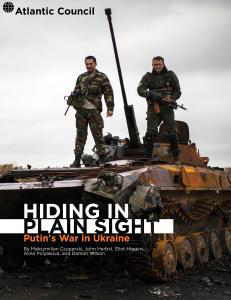
Hiding in Plain Sight – Putins War in the Ukraine
Maksymilian Czuperski, John Herbst, Eliot Higgins,Alina Polyakova, and Damon Wilson (2015)
Russia is at war with Ukraine. Russian citizens and soldiers are fighting and dying in a war of their government's own making. Russian President Vladimir Putin continues to deny Russian involvement in the fighting, but the evidence is overwhelming and indisputable. Drawing upon open source information, Hiding in Plain Sight: Putin's War in Ukraine provides irrefutable evidence of direct Russian military involvement in eastern Ukraine.
PDF Link
INFLUENCE AND PSYOPS
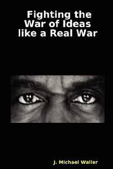
Fighting the War of Ideas Like a Real War
J Michael Waller (2007)
An innovative re-examination of how the US and its allies should fight the battle of ideas. This book focuses on message strategies that the US should pursue for the immediate term to win the war against Islamist extremism. The author is a professor at The Institute of World Politics in Washington, DC, who directs a graduate program on public diplomacy and political warfare.
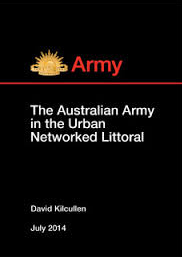
The Australian Army in the Urban Networked Littoral
David Kilcullen (2014)
This paper explores the urban, networked littoral and proposes concepts for control operations in this setting. The ensuing discussion considers in turn the environment, missions and threats, the operational response, and capability implications.
PDF Link
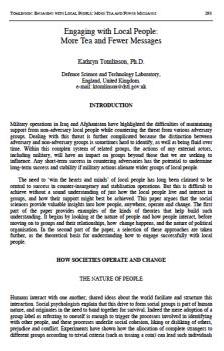
Engaging with Local People: More Tea And Fewer Messages
Tomlinson (2009)
This paper relates the utility of using the social sciences to understand people in order to ‘win the hearts and minds’ campaign. It provides examples of the kinds of theories that help build understanding.
PDF Link
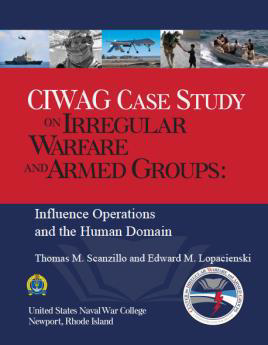
Influence Operations and the Human Domain
MAJ Scanzillo & LTC Lopacienski (2015)
A good operational study of PSYOPS and influence activities conducted by the US in the Philippines.
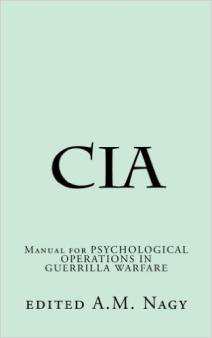
Manual for Psychological Operations in Guerilla Warfare
Edited by AM Nagy (2011)
Historical guide to the conduct of U.S. PSYOPS during a guerilla or counterinsurgency operation.
HUMAN INTELLIGENCE (HUMINT)
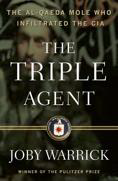
The Triple Agent
Joby Warrick (2012)
The account of the CIA agent meet in Khowst FOB during Afghanistan operations in 2009 that resulted in the deaths of 7 x CIA officers. This book is a warning for HUMINT operators and team leaders to never be complacent and plan in detail the meeting of agents, understanding risk, and HUMINT tradecraft in a military operation. A must read for all source operators and team leaders.
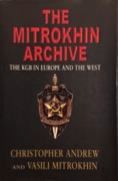
The Mitrokhin Archive
Christopher Andrew and Vasili Mitrokhin (2001)
A detailed historical account of Cold War KGB operations and activities provided by a former KGB officer, this book is a serious read for source operations managers and HUMINT analysts.
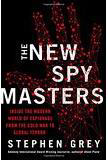
The New Spy Masters: Inside the Modern World of Espionage from the Cold War to Global Terror
Stephen Grey (2015)
In this searing modern history of espionage, Stephen Grey takes us from the CIA's Cold War legends, to the agents who betrayed the IRA, through to the spooks inside Al-Qaeda and ISIS. Techniques and technologies have evolved, but the old motivations for betrayal-patriotism, greed, revenge, compromise-endure. Based on years of research and interviews with hundreds of secret sources, Stephen Grey's The New Spymasters is an up-to-date exposé that shows how spycraft's human factor is once again being used to combat the world's deadliest enemies.
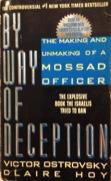
By Way of Deception: The Making of a Mossad officer
Victor Ostrovsky and Claire Hoy (1991)
An account from a Mossad Officer’s experience in the service being trained in HUMINT and associated tradecraft. This book is dated in the cold war and early 1990’s, but provides some useful knowledge on tradecraft issues applicable to source operators now.
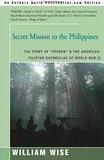
Secret Mission to the Philippines: The Story of "Spyron" & the American-Filipino Guerrillas of World War II
William Wise (1968)
A great short read on the conduct of HUMINT and Guerilla Warfare in WWII during the Japanese occupation of the Philippines. Great to understand historical approaches to the conduct of HUMINT in a hostile environment and the dangers of agent handling.
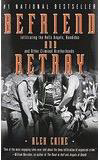
Befriend and Betray: Infiltrating the Hells Angels, Bandidos and Other Criminal Brotherhoods
Alex Caine (2009)
An account of undercover police and federal agency operations in Outlaw Motorcycle Gangs in North America. This book gives insight into agent handling operations from both the source and handler perspective applicable to military HUMINT.
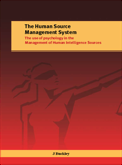
The Human Source Management System – The Use of Psychology in the Management of Human Intelligence Sources
J Buckley (2008)
This book describes how to proactively recruit and manage human sources using well proven psychological methods. Used in in over 40 countries by law enforcement, military and intelligence agencies, the book describes a process that works regardless of the agency size, or the nature of criminality that the agency is deployed against, be it local or organised crime, or terrorism. Recommended for Psychologists, trainers and managers involved in HUMINT.
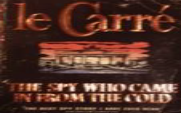
The Spy Who Came In From The Cold
John Le Carre (1965)
A simple old fashion spy story that resonates with truth regarding the craft of agent handling. A classic ‘intelligence fiction’ read.
SIGNALS INTELLIGENCE (SIGINT)
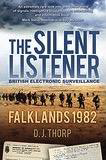
The Silent Listener: British Electronic Surveillance: Falklands 1982
D. J. Thorp (2012)
One of the only accounts of the Electronic Warfare (EW) fight in the Falklands. This book provides background on how the 3 Cdo Brigade and RN EW elements deployed, worked together and developed insight on the Argentines during the 1982 War.
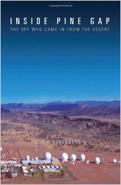
Inside Pine Gap: The Spy Who Came in From the Desert
David Rosenberg (2011)
One of the first detailed accounts of work at the Pine Gap Joint Defence Facility near Alice Springs. This book gives some understanding of the work undertaken at Pine Gap by a former employee and NSA worker. A good open source resource for understanding an element of the SIGINT community.
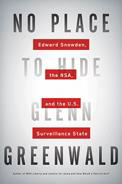
No Place to Hide
Glenn Greenwald (2014)
Written by the journalist who brought the Edward Snowden story to light, this book gives an extreme insight into the SIGINT world of the US and other allies. This book is useful for all source analysts and SIGINT practitioners. It is heavily biased in its view of national SIGINT collection.
INTERROGATION

Inside the Wire: A Military Intelligence Soldier’s Eyewitness Account of Life at Guantanamo
Erik Saar and Viveca Novak (2005)
A good account of an interrogator working inside Guantanamo Bay interrogation facility. This book is insightful for the interrogator and team leader alike – providing views on how and how not to manage interrogation processes.
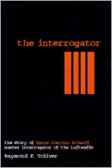
The Interrogator: The Story of Hanns Joachim Scharff, Master Interrogator of the Luftwaffe
Raymond P Tuliver (1997)
The story of Luftwaffe interrogator Hans Scharff in WWII. This book gives the detailed account of an interrogator working against the Allies, and supported by a detailed analysis and database system. An essential read for any interrogator and supporting analysts.
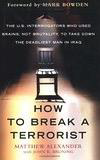
How to Break a Terrorist: The U.S. Interrogators Who Used Brains, Not Brutality, to Take Down the Deadliest Man in Iraq
Matthew Alexander (2008)
A first hand account of military interrogation in the second Iraq War by a U.S. interrogator. This book focuses on interrogation methods and approaches used against Iraqi and terrorists detainees.
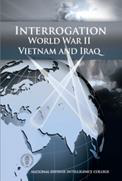
Interrogation World War II, Vietnam and Iraq
US National Defense Intelligence College (2010)
A detailed description of the interrogation practice from all the major US wars in the last 70 years. This book gives a good understanding of how interrogation has worked or not in differing conflicts and proposes useful techniques and practices. Written in light of the Abu Ghraib scandal.
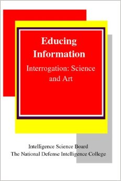
Educing Information – Interrogation Science and Art
Intelligence Science Board, National Defence Intelligence College (2009)
A detailed analysis of interrogation techniques as applied by US military and law enforcement agencies. This book is a must read for all interrogators and interrogation managers.
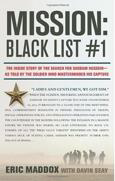
Mission Black List #1
Eric Maddox (2008)
The story of a US Army interrogator during the Iraq War and his activities against high level Iraqi military and political leaders.
ANALYSIS TRADECRAFT
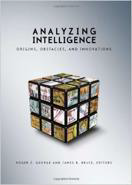
Analyzing Intelligence: Origins, Obstacles and Innovations
Roger George (ed), James Bruce (ed) (2008)
Drawing on the individual and collective experience of recognized intelligence experts and scholars in the field, Analyzing Intelligence provides the first comprehensive assessment of the state of intelligence analysis since 9/11. Its in-depth and balanced evaluation of more than fifty years of U.S. analysis includes a critique of why it has under-performed at times. It provides insights regarding the enduring obstacles as well as new challenges of analysis in the post-9/11 world, and suggests innovative ideas for improved analytical methods, training, and structured approaches. A good read for All Source Analysts.
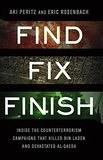
Find, Fix and Finish
Aki Peritz and Eric Rosenbach (2012)
Provides an understanding of the U.S. counter-terrorism campaign against Al Qaeda since 2001, with a focus on how the new targeting cycle of find-fix-finish was developed and actioned.
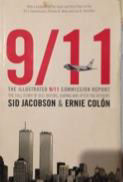
9/11 Commission Report: Comic Version
Sid Jacobson & Ernie Colon (2003)
Because the actual 9/11 Commission Report is long and detailed, this hard to find, comic version gets the point across regarding intelligence failures, analysis bias, and stove-piped agencies. This book is helpful for intelligence planners, analysts and leaders to appreciate prediction of new threats, and cooperation in intelligence analysis.
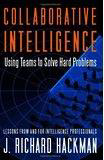
Collaborative Intelligences: Using Teams to Solve Hard Problems
J. Richard Hackman (2011)
How to manage teams to develop assessments and solutions to problems and complex issues. This book draws on recent research findings as well as Harvard Professor Richard Hackman’s own experience as an intelligence community researcher and advisor to show how leaders can create an environment where teamwork flourishes. Hackman identifies six enabling conditions – such as establishing clear norms of conduct and providing well-timed team coaching – that increase the likelihood that teams will be effective in any setting or type of organization. A book for analysis team leaders in All Source Cells and S/J2 teams.
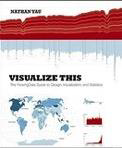
Visualize This: The Flowing Data Guide to Design, Visualization, and Statistics
Nathan Yau (2011)
A technical, but useful guide on data visualization techniques and graphical displays. A very useful book on how to show complex data sets, numbers and figures in ways that enable decision and easy insight. Good for combat intelligence and analysts.
GEOSPATIAL INTELLIGENCE
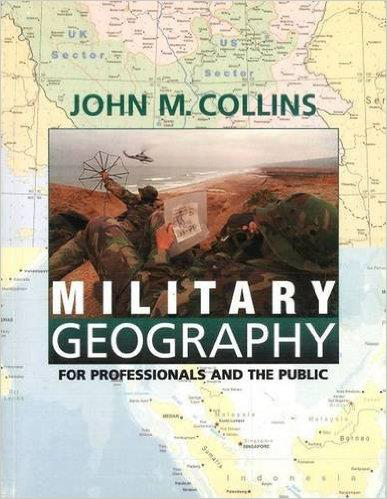
Military Geography: For Professionals and the Public
John M. Collins
This book covers many topics that are crucial to military planning but often receive only passing mention in histories or briefings. Collins, a former Army officer, stresses land geography, but he does not stint oceans, the atmosphere, or interplanetary space. His discussions of urban areas are too brief, given the increasing amount of large-scale violence in cities since the end of World War II.
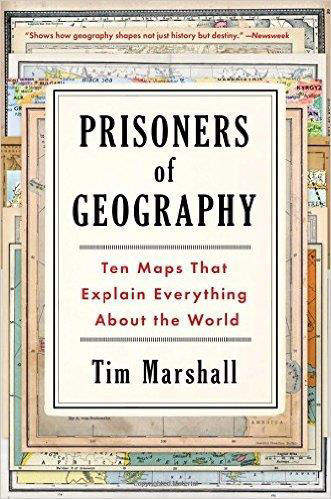
Prisoners of Geography: Ten Maps That Explain Everything About the World
Tim Marshall
All leaders of nations are constrained by geography. Their choices are limited by mountains, rivers, seas, and concrete. To understand world events, news organizations and other authorities often focus on people, ideas, and political movements, but without geography, we never have the full picture. Now, in the relevant and timely Prisoners of Geography, seasoned journalist Tim Marshall examines Russia, China, the USA, Latin America, the Middle East, Africa, Europe, Japan and Korea, and Greenland and the Arctic—their weather, seas, mountains, rivers, deserts, and borders—to provide a context often missing from our political reportage: how the physical characteristics of these countries affect their strengths and vulnerabilities and the decisions made by their leaders.
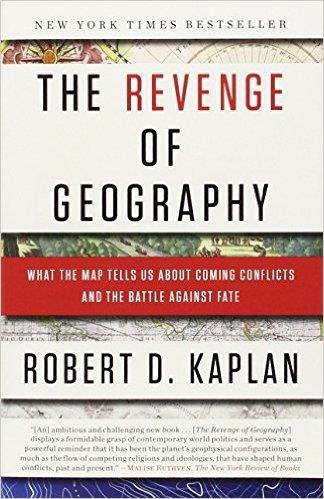
The Revenge of Geography: What the Map Tells Us About Coming Conflicts and the Battle Against Fate
Robert D. Kaplan
In The Revenge of Geography, Kaplan builds on the insights, discoveries, and theories of great geographers and geopolitical thinkers of the near and distant past to look back at critical pivots in history and then to look forward at the evolving global scene. Kaplan traces the history of the world’s hot spots by examining their climates, topographies, and proximities to other embattled lands. The Russian steppe’s pitiless climate and limited vegetation bred hard and cruel men bent on destruction, for example, while Nazi geopoliticians distorted geopolitics entirely, calculating that space on the globe used by the British Empire and the Soviet Union could be swallowed by a greater German homeland.
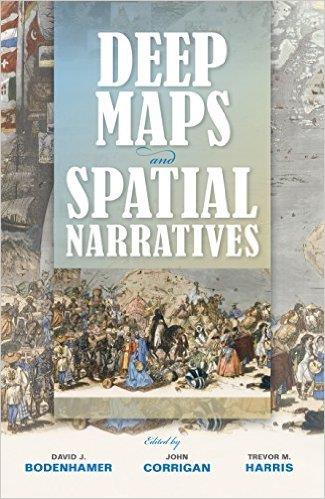
Deep Maps and Spatial Narratives
David J. Bodenhamer, John Corrigan, Trevor M. Harris
Deep maps are finely detailed, multimedia depictions of a place and the people, buildings, objects, flora, and fauna that exist within it and which are inseparable from the activities of everyday life. These depictions may encompass the beliefs, desires, hopes, and fears of residents and help show what ties one place to another. A deep map is a way to engage evidence within its spatio-temporal context and to provide a platform for a spatially-embedded argument. The essays in this book investigate deep mapping and the spatial narratives that stem from it. The authors come from a variety of disciplines: history, religious studies, geography and geographic information science, and computer science. Each applies the concepts of space, time, and place to problems central to an understanding of society and culture, employing deep maps to reveal the confluence of actions and evidence and to trace paths of intellectual exploration by making use of a new creative space that is visual, structurally open, multi-media, and multi-layered.

On The Map: Why the world looks the way it does
Simon Garfield
Maps fascinate us. They chart our understanding of the world and they log our progress, but above all they tell our stories. From the early sketches of philosophers and explorers through to Google Maps and beyond, Simon Garfield examines how maps both relate and realign our history.

Geospatial Intelligence (GEOINT) Basic Doctrine
NGA (2006)
Doctrine that gives a good grounding in the foundation elelments of GEOINT. One of the first documents to actually address GEOINT as a separate subset of Intelligence.
PDF Link

The Evolution of Geospatial Intelligence and the National Geospatial-Intelligence Agency
Dr Gary E. Weir (2015)
An article relating the establishment of NGA and the preceding organizations that provide GEOINT during conflict, very similar in how the Australian Geospatial-Intelligence Organisation grew from the geospatial and imagery organisations within defence. Initially published in AFIO’s Intelligence Journal, Vol 21, No.3, Fall/Winter 2015.
PDF Link
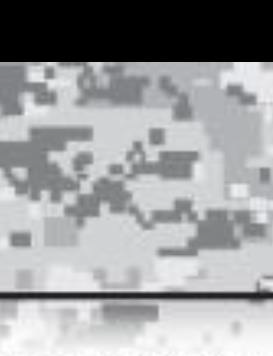
MCWP 2-26 Geospatial Information and Intelligence
US Marine Corps (2014)
A well written and structured doctrine addressing GEOINT across the USMC, an organization focused on expeditionary warfare. Should be read in conjunction with MCRP 2-10B.5 Imagery Intelligence.
PDF Link
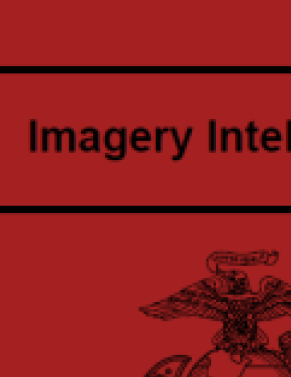
MCRP 2-10B.5 Imagery Intelligence
US Marine Corps (2016)
An excellent update on Imagery Intelligence doctrine from an organisation that is focused on expeditionary operations. The opening chapter gives a good introduction to GEOINT and the components that make up GEOINT. This is a good companion to MCWP 2-26 Geospatial Information and Intelligence.
PDF Link
AMPHIBIOUS OPERATIONS AND INTELLIGENCE
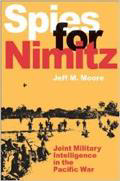
Spies For Nimitz: Joint Military Intelligence in the Pacific War
Jeff Moore (2001)
An account of the formation of the modern PACOM JICPAC in World War II. This book shows the problems and advantages in the conduct of intelligence support to maritime and specifically amphibious operations in war. This book is a great read for those involved in amphibious ISR across EW, Aerial ISR, GEOINT, HUMINT and All Source Analysis.
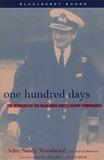
One Hundred Days: The Memoirs of the Falklands Battle Group Commander
Admiral Woodward (1997)
The historical account of the Falkands War (1982) from the Joint Task Force commander’s view at sea. This book provides the operational and strategic view of the war – an extremely useful tool for any analyst, intelligence officer and planner. A good read also for any personnel involved in RAN support an amphibious operations.
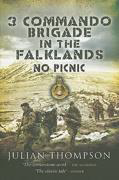
No Picnic: 3 Commando Brigade in the Falklands
Julian Thompson (2009)
A Brigade Commanders view of war and expeditionary amphibious operations during the Falklands. This book provides excellent detail of the UK land operation, including its use of aviation, infantry battle groups and logistics. An excellent book for BG/Brigade intelligence staff, amphibious planners and staff.
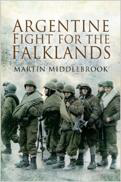
Argentine Fight for the Falklands
Martin Middlebrook (2009)
One of the few detailed accounts of the Falklands War from the view of Argentinian commanders, soldiers and airmen. This book is a must read for students of amphibious operations, specifically intelligence professionals keen to understand the effect of expeditionary amphibious operations in remote geographic locations.

The Watery Maze: The Story of Combined Operations
Bernard Fergusson (1961)
A historical assessment on the conception, formation and employment of the British Combined Operations Command, that employed amphibious operations and commando units during WWII prior to the Normandy landings. This book gives and understanding of the planning and intelligence issues associated with amphibious and special forces operations.
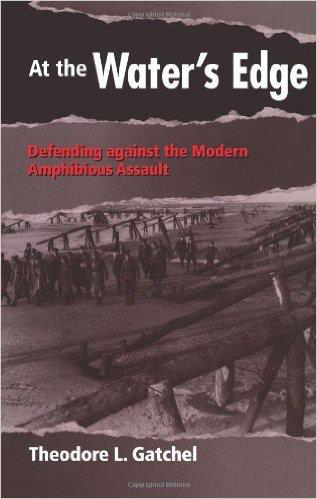
At the Waters Edge
Theodore L. Gatchel
Conventional military wisdom holds that the amphibious assault against a defended beach is the most difficult of all military operations--yet modern amphibious landings have been almost universally successful. This apparent contradiction is fully explored in this first look at 20th-century amphibious warfare from the perspective of the defender.
AIR POWER
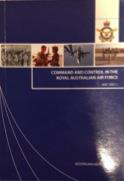
Command and Control in the Royal Australian Air Force
RAAF (2013)
A RAAF doctrinal publication, this book provides an understanding of how our Air Force views command and control as it relates to Air Power. It provides the current doctrinal views on centralization of air power by airmen, in support of theatre and operational commanders. It highlights key themes that are important for how the RAAF will interact with the Army and RAN - particularly relevant for the use and coordination of aerial ISR assets.

Air Power in Small Wars : Fighting Insurgents and Terrorists
James S. Corum & Wray R. Johnson (2003)
Written by senior lecturers in the U.S. Military education system, and former USAF Special Forces operators, this book provides historical analysis and commentary on the application of air power against insurgencies and terrorists, discussing the advantages and problems in such situations. Very useful for ISR planners and intelligence analysts in understanding how Air Power can and should be applied in fighting adversaries who don’t play by our ‘rules’.
DECEPTION AND COUNTERINTELLIGNCE

The Man Who Never Was
Ewan Montague (1953)
This short book provides a readable account of Operation Bodyguard – a key component of the overall allied deception plan in support o Operation Overlord (the amphibious invasion of Europe in World War II). This book provides insight into the difficulties of deception activities and what can be done to ensure an enemy receives the right message.
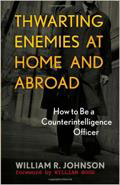
Thwarting Enemies at Home and Abroad: How to Be a Counterintelligence Officer
William R. Johnson (2009)
An Old-School read on CI work in domestic and overseas settings, influenced significantly by the Cold War. This book does however provide timeless insights into CI officers and their work that is applicable today.
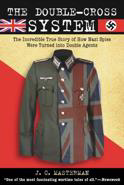
The Double-Cross System
J.L. Masterman (1972)
The detailed story on UK deception and CI operations against the Germans during WWII. The book provides insight on how the UK developed and executed an inter-agency CI and deception effort during WWII with great success.
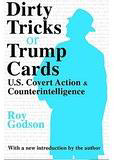
Dirty Tricks or Trump Cards: U.S. Covert Action and Counterintelligence
Roy Godson (2000)
An historical overview of CI and covert actions by US strategic agencies. This book provides historical case studies and assessments on the employment of CI techniques in a range of operational scenarios.
OPEN SOURCE INTELLIGENCE (OSINT) – INCLUDING SOCIAL MEDIA (SOCMED)
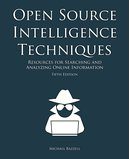
Open Source Intelligence Techniques: Resources for Searching and Analysing Online Information
Michael Bazzell (2016)
Author Michael Bazzell has been well known and respected in government circles for his ability to locate personal information about any target through Open Source Intelligence (OSINT). In this book, he shares his methods in great detail. Each step of his process is explained throughout sixteen chapters of specialized websites, application programming interfaces, and software solutions.
SPECIAL OPERATIONS
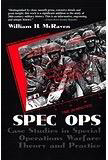
Spec Ops: Case Studies in Special Operations Warfare: Theory and Practice
William McRaven (1996)
A must read, baseline book for anyone working with special forces – this book proposes a range of theories regarding the employment of special operations units, using case studies of such operations throughout history. The book is highly recommended for intelligence officers, planners and analysts.

Relentless Strike: The Secret History of Joint Special Operations Command
Sean Naylor (2015)
A comprehensive history and narrative on the U.S. JSOC. This book is a must read for any professionals working SOCOMD and provides a detailed understanding of the formation of National Mission Units and their associated support and enabling functions.

Ghost Wars
Steve Coll (2004)
A good historical read on covert operations; actions in the middle east; CIA activities; and the confluence of special forces in the intelligence system. A useful read for professionals working in SOCOMD.

Selous Scouts: Top Secret War
Ron Reid Daly (1983)
This classic account of special forces development and operations in Africa, specifically in Rhodesia during the 20th Century is a must read for professionals working in unconventional teams and special forces. A hard to find book.
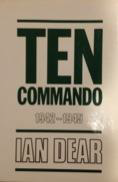
Ten Commando
Ian Dear (1987)
WWII account of the formation and deployment of Commando capabilities from the Allies.

Warrior Elite
Robert Macklin (2016)
An unauthorized narrative on Australian Special Forces and National Intelligence Agencies since World War II to the present. The book provides some good understanding of SOCOMD development and its relationship to the Australian Intelligence Community (AIC), but lacks access to many critical sources, failing to mention a range of units and organizations involved in intelligence work in Australia. The book, however is a contemporary view on intelligence, security and special forces work.
DECISION MAKING

Sources of Power: How People Make Decisions
Gary Klein (1999)
Critical reading for intelligence officers and planners, this book provides knowledge on decision making systems, bias and paradigms in leaders. A very useful book for all analysts and S2s.
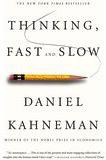
Thinking Fast, Thinking Slow
Daniel Kahneman (2013)
Another useful read for intelligence staff, officers and analysts to understand the way decisions and intuitive thinking and decision making occurs. The book is a heavy read, but worth the effort to understand thought processes and decisions by a range of organisations.
MILITARY LEADERSHIP AND PLANNING
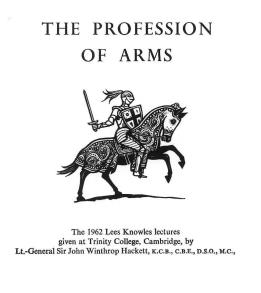
The Profession of Arms
LTGEN Sir John Winthrop Hackett K.C.B (1962)
British General Sir John Winthrop Hackett, the renowned soldier-historian, has many perceptive observations on professionalism, training, and discipline. For example, he points out, "Tra ining was tough. realistic, and rational . . . in the Roman Army." The principles that applied to training two thousand years ago are equally applicable as we strive to enhance our warfighting skills and improve combat readiness. Hackett's concept of professionalism can be easily related to our own Army's philosophy of leadership and to those values that give
purpose to such leadership and discipline.
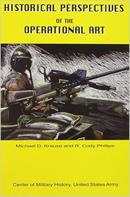
Historical Perspectives on the Operational Art
Michael D. Krause & R Cody Philips (2010)
A must read for planners and mid-level intelligence officers – this book provides understanding of the ‘operational art’ as it pertains to major military campaigns and operations throughout history. A publication of the Center of Military History United States Army, this book showcases operational level planning, design and campaign building.

The Generals
Thomas E. Ricks (2010)
An insightful assessment and narrative on the topic of Generalship in the U.S. Military over the years. This book provides great insight for intelligence officers on the mindset, type and nature of senior military commanders – specifically in the U.S. system during war. A very useful read for senior intelligence officers, planners and commanders.
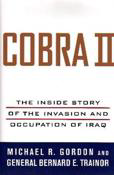
COBRA II: The Inside Story of the Invasion and Occupation of Iraq
Michael R. Gordon & General Bernard E. Trainor (2007)
COBRA II provides the story of the planning and execution of the 2003 Iraq invasion and occupation giving great glimpses into how the U.S. military developed the plan, coalition and objectives for the war that lasted until 2011.
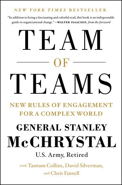
Team of Teams : New Rules of Engagement For a Complex World
General Stanley McChrystal (retd) (2015)
Written by former JSOC commander and ISAF Commander in Afghanistan, this book looks at the application of JSOC command and management techniques in the current state of world affairs and information environments. It is very useful for planners, commanders and intelligence officers to read and has application across all endeavors.
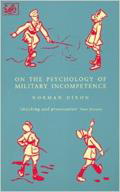
On the Psychology of Military Incompetence
Norman Dixon (1994)
A serious analysis on why some military leaders are incompetent and failures. A good, insightful read on the personality and psychological aspects of military leadership over the years.
NATIONAL INTELLIGENCE AGENCIES

Oyster: The History of The Australian Secret Intelligence Service
Brian Toohey and William Pinwill (1989)
An historical book that provides an unauthorized account of ASIS and its activities.
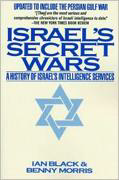
Israel’s Secret Wars: A History of Israel’s Secret Intelligence Services
Ian Black and Benny Morris (1992)
A good, detailed read on MOSSAD and other Israeli intelligence services, providing understanding of how they function, operations and decision-making.

Tale of the Scorpion
Harvey Barnett (1988)
An unofficial history of ASIO that provides unique understanding of the background, early days and workings of the Australian domestic security intelligence agency. Useful for understanding Australian domestic politics and decision making with respect to security intelligence and counterintelligence issues.
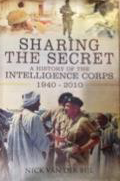
Sharing the Secret: A History of the Intelligence Corps 1940 - 2010
Nick van der Bijl (2014)
A detailed history of the British Intelligence Corps from inception until the present day. Provides great insight into all aspects of the Corps, including units, operations, training and capability development over the last 70 years.
AUSTRALIAN MILITARY HISTORY
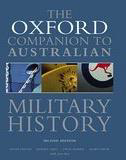
The Oxford Companion to Australian Military History
(2008)
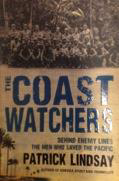
The Coast Watchers: Behind Enemy Lines The Men Who Saved the Pacific
Patrick Lindsay (2009)
An historical account of Australian Coastwatcher teams and individuals during WWII who conducted long term surveillance and support operations in the Pacific theatre. Provides insight into ground based surveillance and reporting systems for collection planners.
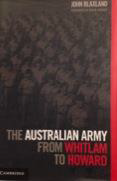
The Australian Army from Whitlam to Howard
John Blaxland (2013)
A detailed account of the Army’s most recent history with coverage of all major operations the Army has supported to 2009.

36 Days
Hugh Dolan (2013)
Written by a former RAAF Intel Officer, now historian, this book is the only work devoted to the intelligence component of the Gallipoli landings and wider campaign. This book shows the level of HUMINT, diplomatic reporting, aerial reconnaissance, and GEOINT work that was available prior to the ANZAC landings and challenges many traditional views on the Gallipoli campaign. Recommended reading for all intelligence officers.
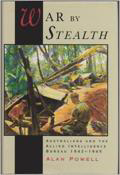
War by Stealth: Australians and the Allied Intelligence Bureau 1942-1945
Alan Powell (1999)
A detailed account of Australians working in the Allied Intelligence Bureau (AIB), that formed a key intelligence branch for General MacArthur during the Pacific Campaign in WWII. This book highlights the intelligence analysis, PSYOPS, imagery interpretation, surveillance, HUMINT, translator and interrogation operations that served a major war.

The Unnecessary War: Pacific Campaigns of 1944-45
Peter Charlton (1983)
Provides a detailed account of the planning and operations of Australian led campaigns in the Pacific and South East Asia during the final stages of World War II (1944-45). This book provides good reading for understanding independent Australian military planning; insight into Australian Generalship; and historical understanding of the Australian political dimension as it relates to state warfare.
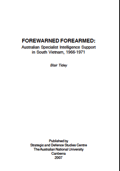
Forewarned forearmed : Australian specialist intelligence support in South Vietnam, 1966-1971
Blair Tidey (2007) Strategic & Defence Studies Centre
Since the end of the Vietnam War, historical research and writing on the Australian military involvement has only briefly dealt with intelligence aspects. Even less attention has been given to specialist intelligence collection, such as signals intelligence, imagery intelligence and human intelligence. This paper examines the modus operandi and effectiveness of specialist intelligence support to the 1st Australian Task Force in South Vietnam during the period from May 1966 to December 1971. It focuses on the activities of the little-known Detachment 1st Divisional Intelligence Unit and 547 Signal Troop. The paper examines how these units were organised and equipped, how they conducted their operations, and how effective they were in supporting combat units.
PDF Link
CYBER OPERATIONS
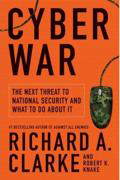
Cyber War: The Next Threat to National Security and What to Do About It
Richard A. Clarke (2012)
A useful basic read on cyber threats and adversaries. This book provides insight into the Cyber domain – useful for analysts and cyber specialists alike.
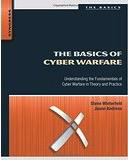
The Basics of Cyber Warfare: Understanding the Fundamentals of Cyber Warfare in Theory and Practice 1st (first) Edition
Winterfeld, Steve, Andress, Jason (2012)
A step by step guide to understanding cyber warfare operations and what it means for military applications and national security.
FUTURE WARFARE
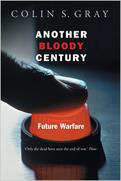
Another Bloody Century: Future Warfare
Colin S. Gray (2010)
An extremely well written and influential book regarding future conflicts, themes and what our operating environment could look like. The book is extremely useful for future planners, anchoring current future war trends in a detailed history of conflict. A highly recommended book for any planner, analyst and force developer.
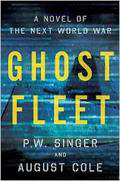
Ghost Fleet – A Novel of the Next World War FICTION
P.W. Singer & August Cole (2015)
A great fictional read on potential future war scenario against China. This book forecasts emerging military and civilian technologies and shows a potential future war in the Pacific region. A very useful book to consider what could be in terms of high-end, technically enabled adversaries and some of the Wests real vulnerabilities.
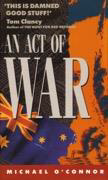
An Act of War FICTION
Michael O’Connor (1990)
The South African government has collapsed. India begins a campaign against Australian ownership of the strategic Cocos Islands. Then, on Christmas Eve, in perfect weather, an Australian iron ore carrier vanishes with all hands off the north-west coast. Shortly after, India invades the Cocos Islands. A scenario long dreaded by the military and intelligence planners in Canberra is being played out...









